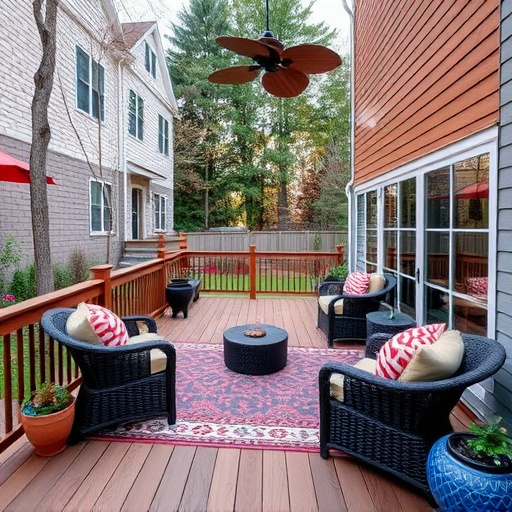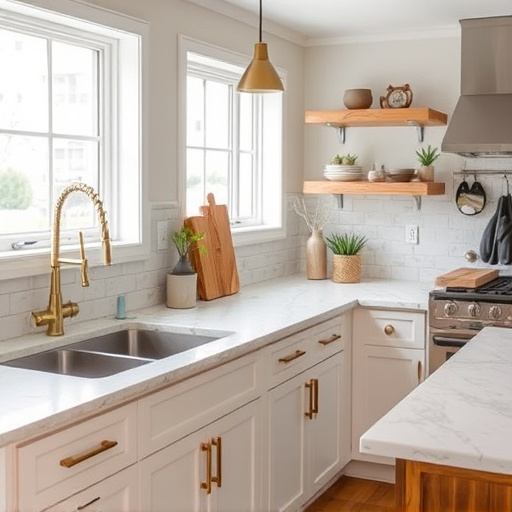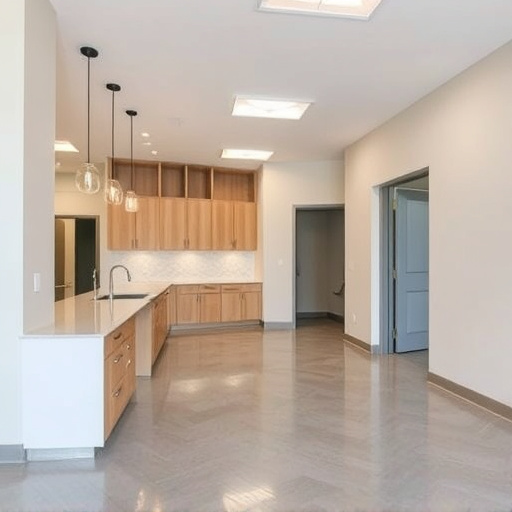Before laying tile flooring, inspect and repair subfloor damage, clean the surface, and install an underlayment for support, protection, and moisture barrier. Use patching compounds, wood putty, or consult professionals for severe issues to ensure a smooth, dry base for long-lasting, aesthetically enhanced tile flooring.
“Eager to lay down that new tile flooring but unsure where to start? This comprehensive guide will walk you through the essential steps of preparing your subfloor for a seamless tile installation. From assessing and repairing damage to installing the perfect underlayment, we’ll break it down. Learn how to ensure a robust foundation for your tile flooring, enhancing the longevity and stability of your new, beautiful surface.”
- Assess and Repair Subfloor Damage
- Level and Prepare the Surface
- Install Underlayment for Optimal Support
Assess and Repair Subfloor Damage

Before laying any tile flooring, it’s crucial to assess and repair any damage to your subfloor. Damage can include cracks, gaps, or areas where the subfloor is uneven or unstable. These issues can lead to tile lipping, gaps between tiles, or even tile breakage during installation. Start by inspecting the subfloor for any visible problems. If you notice significant damage, such as large cracks or warped boards, it’s best to repair or replace these before proceeding.
For smaller issues like minor cracks or loose nails, use appropriate patching compounds and wood putty to fix them. Ensure the area is dry and smooth before proceeding. In cases of severe damage, especially in bathroom remodels or kitchen renovations where moisture can be a factor, it might be prudent to consult with home improvement services to address structural issues and ensure your subfloor is ready for long-lasting tile flooring.
Level and Prepare the Surface

Before laying any tile flooring, ensuring that your subfloor is level and properly prepared is a crucial step. Begin by assessing the current state of your surface; it should be even and free from any significant imperfections or unevenness. If there are any dips, bumps, or waves in the floor, these need to be addressed for a seamless tile installation. Leveling the subfloor can be achieved through various methods, including using self-leveling compounds or sandpaper to smooth out irregularities.
For existing floors, especially in home additions or kitchen and bath renovations where floor replacements are common, it’s essential to check for any signs of damage or moisture issues. Repair or replace damaged boards and ensure the subfloor is dry, as moisture can cause tiles to loosen over time. Proper preparation of the surface includes cleaning away dust, dirt, and debris, ensuring a clean slate for your new tile flooring project.
Install Underlayment for Optimal Support

Before laying tile flooring, installing an underlayment is a crucial step for optimal support and long-lasting results. Underlayments provide a critical layer between your subfloor and the tiles, serving as a buffer against moisture, temperature fluctuations, and noise transmission. Choose the right type of underlayment based on your project’s needs; options include foam, rubber, or fiberglass mats designed specifically for tile installations. This essential layer ensures your new floor remains secure, flat, and free from common issues that can arise during bathroom renovations or kitchen remodels.
Properly installed underlayment protects against moisture damage, a frequent concern in spaces like bathrooms, where water exposure is high. It also helps to reduce noise levels, making it ideal for homes with busy lifestyles or those looking to enhance their space through renovation services. By providing a stable base, the underlayment contributes to the overall durability and aesthetics of your tile flooring, ensuring a seamless and long-lasting finish.
Preparing your subfloor is a critical step in ensuring long-lasting, beautiful tile flooring. By assessing and repairing damage, leveling the surface, and installing underlayment, you create a solid foundation for your new tiles. Following these steps guarantees a smooth installation process and enhances the overall durability of your tile flooring, allowing you to enjoy a flawless, long-lasting finish.














